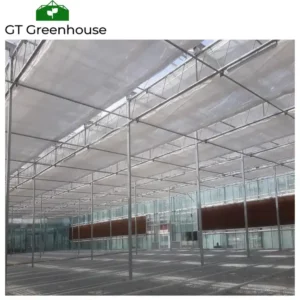Plastic film greenhouses can have a significant impact on the overall energy consumption of the greenhouse, influencing both heating and cooling requirements.
Several factors contribute to how plastic film greenhouse systems interact with energy consumption:
- Insulation Properties:
- Thermal Insulation: Plastic films have varying degrees of thermal insulation properties. While they provide some insulation, they may not be as effective as rigid materials (e.g., glass or polycarbonate). This can affect the energy needed for heating during colder periods, as plastic films may allow more heat to escape.
- Solar Transmission:
- Light Penetration: Plastic films vary in their ability to transmit solar radiation. Some films are designed to optimize light transmission while providing adequate shading. Proper light penetration reduces the need for supplemental lighting systems, positively influencing energy consumption.
- Heat Retention at Night:
- Radiative Heat Loss: Plastic films may allow radiative heat loss during the night. While they retain some heat, they may not provide the same level of insulation as other materials. This can impact the energy required for nighttime heating, especially in colder climates.
- Ventilation and Cooling:
- Natural Ventilation: Plastic film greenhouses are often designed with sidewall and roof vents for natural ventilation. This can reduce the reliance on mechanical cooling systems during warmer periods, contributing to energy savings.
- Shading Systems:
- Integration with Shading: Plastic film greenhouses may incorporate shading systems to control light intensity and temperature. Adjustable shade systems can reduce the need for cooling during peak sunlight hours, helping manage energy consumption.
- Greenhouse Design and Layout:
- Orientation and Airflow: The design and layout of the plastic film greenhouse influence energy efficiency. Proper orientation and consideration of prevailing winds can enhance natural ventilation and reduce the need for mechanical heating and cooling.
- Cooling and Humidity Control:
- Evaporative Cooling: Some plastic film greenhouses utilize evaporative cooling systems. These systems can help manage temperatures during hot periods by evaporating water, reducing the demand for energy-intensive cooling methods.
- Heating Systems:
- Efficiency of Heating Systems: Plastic film greenhouses may require heating during colder months. The efficiency of heating systems, such as gas heaters or radiant heating, affects overall energy consumption. Well-designed systems can optimize heat distribution and minimize energy usage.
- Seasonal Considerations:
- Adaptability to Seasons: Plastic film greenhouses offer flexibility for seasonal adaptation. China Plastic Film Greenhouse suppliers They can be more easily modified or replaced to address changing weather conditions, allowing for adjustments that align with seasonal energy demands.
- Greenhouse Technology Integration:
- Smart Environmental Controls: Integration with smart environmental control systems allows for precise monitoring and control of temperature, humidity, and other factors. This enhances energy efficiency by optimizing conditions based on plant needs and external weather conditions.
- Use of Energy-Efficient Technologies:
- Energy-Efficient Equipment: The choice of energy-efficient technologies, such as energy-efficient fans, lighting, and climate control equipment, can further minimize energy consumption in plastic film greenhouses.
- Innovations in Plastic Films:
- Advanced Film Technologies: Ongoing innovations in plastic film technologies, including the development of films with enhanced thermal properties and light diffusion, can contribute to improvements in energy efficiency.
In summary, the impact of plastic film greenhouse systems on overall energy consumption is influenced by factors such as insulation properties, light transmission, ventilation, heating and cooling methods, greenhouse design, and technological innovations. By carefully considering these factors and employing energy-efficient practices, growers can optimize the energy performance of plastic film greenhouses.
